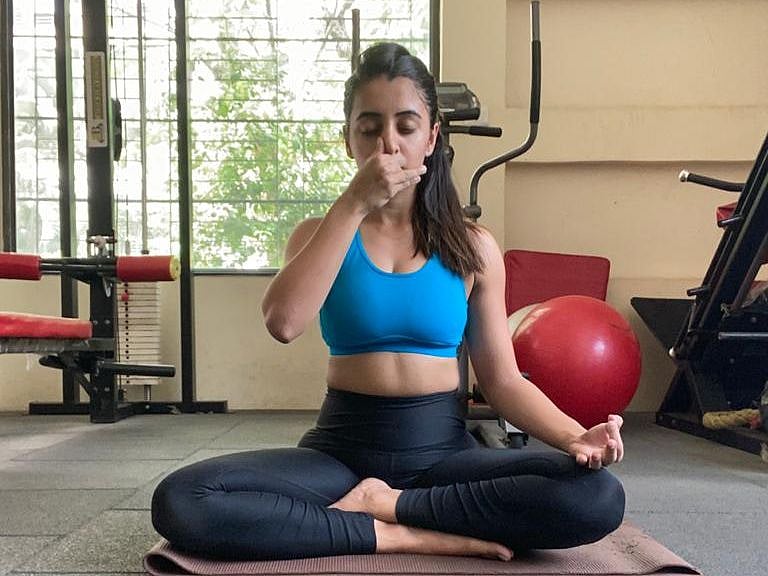Anxiety has become a very common state of mind lately due to the demands of work, lifestyle and everything. The stress of life, of not knowing what the future holds, what is yet to come is what makes one anxious. It not only causes a restless state of mind but also reflects in other aspects of our lives and can cause insomnia, digestive issues, skin problems and so on. Quieting the mind can then help deal with this anxiety and the problems caused by it. Yoga has proven to help deal with anxiety related issues. Pranayama, which are breath practices that help prolong the breath, is an effective practice to help calm the mind.
Diaphragmatic breathing
Diaphragmatic breathing is a type of a breathing exercise that helps strengthen your diaphragm, an important muscle that helps you breathe. This breathing exercise is also sometimes called belly breathing or abdominal breathing.
It has a number of benefits that affect your entire body. It’s the basis for almost all meditation and relaxation techniques which can lower stress levels, reduce blood pressure, and regulate other important bodily processes.
How to do it
Sit in a comfortable position or lie flat on the floor, your bed, or another comfortable, flat surface.
Relax your shoulders.
Put a hand on your chest and a hand on your stomach.
Breathe in through your nose for about two seconds. You should experience the air moving through your nostrils into your abdomen, making your stomach expand. During this type of breathing, make sure your stomach is moving outward while your chest remains relatively still.
Purse your lips (as if you’re about to drink through a straw), press gently on your stomach, and exhale slowly for about two seconds.
Repeat these steps several times for best results.
Brahmari
Bhramari word is made from the Hindi word “Bhramar” which means Bumble Bee. Brahmari (Bee Breath) is a very effective pranayama for calming the mind. The activity of this respiratory exercise helps to induce a calming impact on the mind rapidly. Brahmari pranayama edges in reducing high vital sign, fatigue, and mental stress. This Pranayama is one of the great breathing exercises to release the mind of disquiet, anxiety, or frustration and get rid of anger.

How to do it
Sit in a comfortable asana
Close your eyes and breathe deeply.
Now close your ears lids or flaps with your thumbs.
Take Shanmukhi mudra or simply close your ears with your thumbs.
Applying very gentle pressure to the sides of your nose.
Now concentrate your mind on the area between your eyebrows.
Keep your mouth closed; breath out slowly through your nose with making a humming sound of OM.
Repeat this process 5 times. The important thing is that while doing this Pranayama assumes that you are being connected to all the positive energies of the universe.
Anulom Vilom
Anulom vilom is a specific type of controlled breathing (pranayama) in the practice of yoga. It involves holding one nostril closed while inhaling, then holding the other nostril closed while exhaling. The process is then reversed and repeated.
Alternate nostril breathing is said to have many physical and psychological benefits, including stress reduction and improved breathing and circulation. There’s scientific evidence that supports some of these claims.
Most people can practice anulom vilom breathing safely and without side effects. Read on as we look at the potential benefits of anulom vilom breathing and a step-by-step guide to get started.

How to do it
Choose any meditative seated posture. Keep your spine and neck straight and close your eyes.
Clear your mind of everything outside of this moment.
Start with your outer wrists resting on your knees.
Using your right hand, fold your middle and index fingers toward your palm.
Place your thumb on your right nostril and your ring finger on the left nostril.
Close your right nostril with your thumb and inhale through your left nostril, slowly and deeply, until your lungs are full. Focus on your breathing.
Next, release your thumb and close your left nostril with your ring finger.
Exhale slowly through the right nostril.
Now do it in reverse, this time inhaling through the right nostril and exhaling through the left.
(The writer is Yoga Expert, Sarva)











